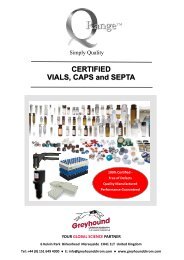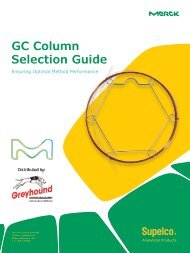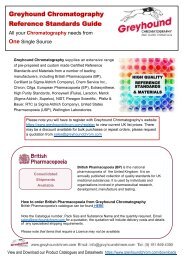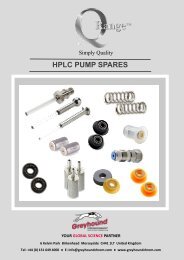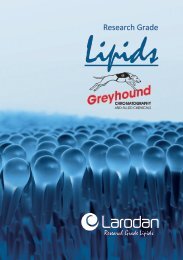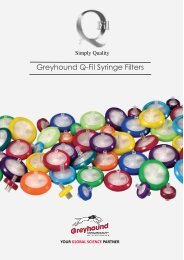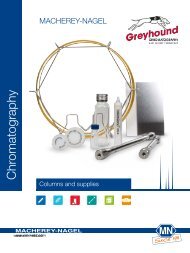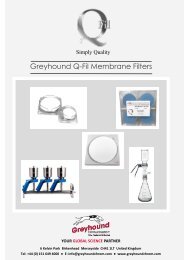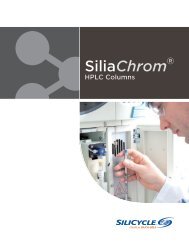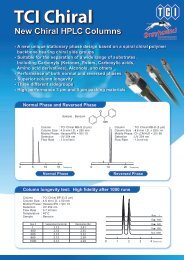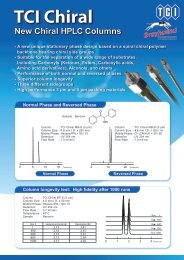You also want an ePaper? Increase the reach of your titles
YUMPU automatically turns print PDFs into web optimized ePapers that Google loves.
SYRINGE TECHNICAL REFERENCE | SYRINGE CARE AND USE<br />
Daily Use Protocol (Cont.)<br />
Step 3<br />
Priming<br />
Step 7<br />
Cleaning<br />
Eliminate compressible trapped air by completely priming<br />
the syringe with sample. Immerse the needle point 2 mm<br />
to 3 mm into the sample solution. Then rapidly draw and<br />
dispense sample into the syringe until bubbles are no<br />
longer visible in the syringe barrel. Alternatively, remove air<br />
bubbles by turning the barrel upright and allowing the air<br />
bubbles to rise to the needle exit. Then dispense both the<br />
air bubbles and the sample.<br />
Rinse the syringe with a cleaning solvent known to solubilize<br />
the sample. Then rinse with deionized water, and finally<br />
rinse with high purity acetone. Allow time for the acetone<br />
to evaporate before storing the syringe. Do not soak or<br />
submerge the entire syringe in any cleaning agent.<br />
The preferred cleaning agents are non-alkaline, nonphosphate,<br />
and non-detergent based. <strong>Hamilton</strong> offers a<br />
biodegradable, non-phosphate, organic Cleaning Solution<br />
Concentrate (P/N 18311).<br />
Step 4<br />
Fill the syringe with<br />
a small amount of<br />
excess liquid.<br />
Overfilling<br />
Step 8<br />
Storage<br />
Store the syringe in its original packaging or the Syringe Rack<br />
(P/N <strong>20</strong>4880) to protect against breakage.<br />
Step 5<br />
Required Volume<br />
Slowly dispense the excess sample until only the required<br />
volume of sample remains in the syringe. Visually check to see<br />
that the syringe scale and sample meniscus are parallel. It is<br />
optional to clean the exterior surface of the needle with a lintfree<br />
tissue. Avoid wicking sample with the tissue by making<br />
sure it does not come in contact with the needle opening.<br />
Step 9<br />
Solvent Compatibility<br />
Step 6<br />
Final Dispensing Volume<br />
Final Dispense<br />
Dispense the final sample volume into an<br />
appropriate vessel.<br />
The adhesive used to affix needles and hubs to <strong>Hamilton</strong><br />
Microliter and Gastight syringes is the most chemically<br />
resistant available. However, with prolonged exposure, some<br />
solvents may attack and deteriorate this highly resistant<br />
adhesive. In particular, caution should be exercised with<br />
solvents containing halogenated hydrocarbons such as<br />
dichloromethane (methylene chloride). For applications<br />
using these solvents, Removable Needle (RN) syringes are<br />
recommended because no adhesive is present<br />
in the fluid path.<br />
78



